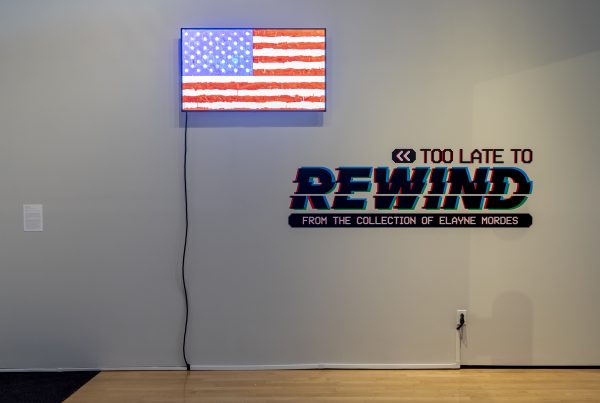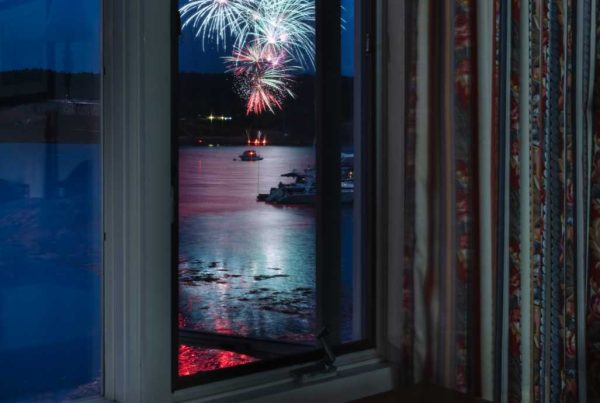Flowers have seduced artists since art was a thing. Botanical illustrations date back to first-century BC, lilies and carnations played key roles in 16th century Christian art, and trailblazers from Monet to Van Gogh to O’Keeffe devoted much of their corpuses to blooming flora. With 400,000 species of flowering plants from which to choose, options are as limitless as the artist’s imagination.
Hence the challenge posed to Melanie Johanson, curator of the Cornell Art Museum: How to whittle down the infinite sprawl of floral art into a thematically cohesive exhibition? For her spring exhibition “Flora,” she settled on nearly 30 artists from Delray Beach to South Korea, with a preference for those who thought outside the vase: The activists, the spiritualists, the deconstructionists.
Yes, there are a few of the expected lovely still-lifes hanging on the Cornell’s walls, but it’s their unexpected, site-specific counterparts that most tickle the mind and warm the heart. As soon as you enter the museum, regardless of the door you choose, you’ll be drawn like a magnet to Hayley Sheldon’s towering paper dandelion hanging upside down in the central atrium, its “windblown” buds settling on a nearby wall like static fireworks. Look down on it from the second floor or up into it from the first; either way, you feel like a Lilliputian, or like Matt Damon’s shrunken protagonist from “Downsizing”—a surreal and thrilling sensation.

An earlier version of “Floating Garden”
The grandest showstoppers of “Flora” consume entire galleries, like Amanda McCavour’s “Floating Garden,” in which approximately 1,000 embroidered buttercups, asters and other pastel-hued plants suspend from the ceiling on individual lines of string. The installation includes a walking path bisecting the flowers, which dance like wind chimes at the slightest breeze generated by human movement. When you’re in its presence, you feel nothing but tranquility.
Upstairs, the tweeting birds and forest soundscape of “Enchanted” draws you into an intimate but despoiled paradise from sculptor Diane Arrieta and photographer/video artist Cheryl Maeder. The sensory data that envelops you as soon as you enter the gallery is almost overwhelming, but its totality is impactful. Maeder’s large-scale photos of children trying to wade on inner tubes in the mucky, swampy remnants of a river complement Arrieta’s series of animal sculptures, marooned on their own piles of tubes as a result of rising oceans and other losses of habitat. A video supplement reminds us that as more pollinator species are threatened, our once-Edenic gardens are under siege.

The relationship between nature and capitalism is also at the heart of Stephen Wilson’s luxury-brand boxes—like Gucci, Hermes and Chanel—repurposed with earthen, verdant textures, such as clusters of butterflies. Is Wilson’s work a criticism of consumerism, or a statement of harmony between conspicuous consumption and nature? The eye beholds.

“Mandala Grid”
From the medium to the message, there are no limits to the type of artists that made the “Flora” cut. We get fascinating cosmic collages from self-described ecofeminist Mira Lehr, a splatter “portrait”—you can kind of see where the face is—from painter Mike Chearney, and vividly real, tactile paintings by Carin Wagner. Miya Ando deployed dried ficus leaves to construct her kaleidoscopic “Mandala Grid,” and Metis Atash’s “Forget Me Not Featuring Warhol” is a fiberglass Buddha with a wardrobe of Warhol’s flowers and a punk haircut, glistening with Swarovski crystals. It’s as fun as it is potentially subversive, and it ties in with another piece situated at the front entrance.

Early Warhol
At the risk of burying the lede much longer, “Flora” includes a drawing by Warhol himself, surely the most renowned artist to exhibit at this museum, and another notch on its belt of art-world respectability. The untitled still-life of flowers in vases, drawn with ink and tempera, predates his more-famous silkscreen flowers—the ones that emblazon the Buddha’s sparkling attire—and its blotted style reveals plenty of glorious frays and imperfections.
And yet, this piece isn’t even among the top 10 most interesting works in “Flora.” Even if you come for the Warhol, you’ll stay for the immersive walk-throughs. And walk through them again. And again.
“Flora” runs through Sept. 9 at Cornell Art Museum at Old School Square, 51 N. Swinton Ave., Delray Beach. Admission costs $5-$8. Call 561/243-7922 or visit oldschoolsquare.org.







